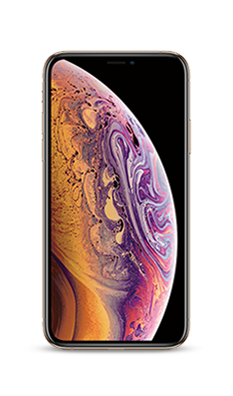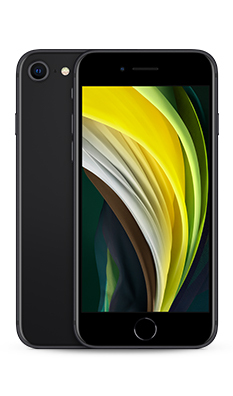Which one is best for you?
iPhone XS 5.8-inch Super Retina HD display is just over an inch larger than iPhone SE’s 4.7-inch Retina HD display, and iPhone XS has a slimmer bezel than iPhone SE’s screen.
iPhone XS’ features include a rear 12-megapixel dual lens camera with 2x optical zoom, depth of field effects and Portrait Lighting mode. The front-facing 7-megapixel TrueDepth camera also lets you unlock your phone at a glance with Face ID and map your expression onto fun 3D animojis. Not to be outdone, iPhone SE’s single rear 12-megapixel Wide camera and 8-megapixel front camera also come with Portrait Lighting, up to 5x zoom, and Auto HDR for rich, detailed pictures. Both phones have 4K video recording capability with optical image stabilisation and Slo-mo video support.
Finally, when it comes to processing power, iPhone SE has a slightly more powerful processor with the A13 Bionic chip, compared to iPhone XS’ A12 chip.
-
Apple
iPhone XS
Create stunningly detailed images thanks to Smart HDR – or adjust depth of field to create professional looking portraits
See more with 60% greater dynamic range than its predecessor, iPhone X
Share your feelings with 3D Animoji that mirror your own expression
Enjoy a smoother gaming and streaming experience with the new A12 Bionic chip
-
Apple
iPhone SE
Get a great value iPhone for a fraction of the cost of most other models – it’s got loads of great features paired with impressive, fast performance
A small but mighty companion – its 4.7-inch Retina HD screen fits neatly into your hand or pocket
Watch up to 13 hours of video on a single charge
Advanced camera system powered by an A13 Bionic processor and 4K video
| Name | iPhone XS | iPhone SE |
|---|---|---|
| Image |

Buy the iPhone XS |

Buy the iPhone SE |
| Display | 5.8 inches | 4.7 inches (diagonal) |
| Size and weight |
Height: 158.2 mm Width: 77.9 mm Depth: 7.3 mm Weight: 192 grams |
Height: 138.4mm Width: 67.3mm Depth: 7.3mm Weight: 148g |
| Rear camera | Dual 12 MP | 12-megapixel Wide camera |
| Front camera | 7 MP | 7 MP |
| Video recording | 4K video recording at 24fps | 4K video recording at 24, 30 or 60 frames per second |
| Processor | A12 bionic chip | A13 Bionic Chip with third generation Neural Engine |
| Battery | 2658 mAh | 1821mAh |
| Storage |
64 GB 256 GB 512 GB |
64GB 128GB 256GB |
| Splash, water and dust resistant | Yes | Yes - IP67 |
| Buy now | Buy the iPhone XS | Buy the iPhone SE |